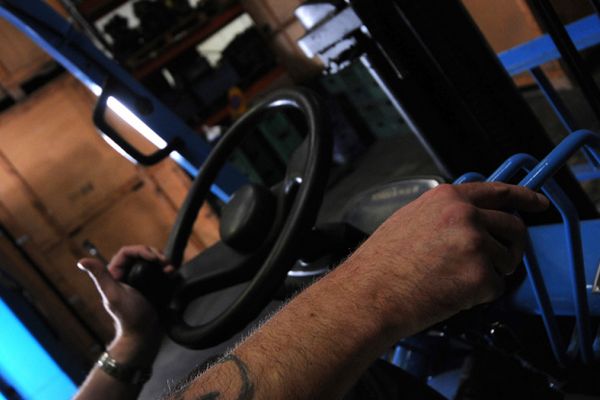Why Do Forklifts Have Seatbelts?

The sole purpose of seatbelt use on a forklift is not for front-end collisions like they are for automobiles. They are to keep forklift drivers in the cockpit (whether they want to or not).
The number one cause of counterbalanced forklift operators going to the morgue instead of home to supper with their families is tip-over accidents. On average 50 people lose their lives each year working on, or around forklifts, and are involved in a tip-over accidents. Engineering, accident statistics, eye-witness, and first-hand accounts tell us that if an operator stays inside the overhead guard area in the seat of the truck, his or her chances of survival (or at least reducing the severity of injury) increase dramatically.
The seat belt is first and foremost designed to keep you in the seat in case of tip-over. Normal human behavior says “jump” when the forklift starts to tip. In that split second needed to make a decision, two things motivate you in the wrong direction. First, momentum is throwing you to the low side of the machine (direction of tip). Secondly, in your mind, ground means safety, and the ground is closest on the low side (direction of tip). The problem is you can’t get away from the machine fast enough, and the overhead guard crushes you at the head, neck, shoulders, or chest.
Furthermore, you need to keep your hands and feet inside the confines of the forklift and overhead guard. Humans have another peculiar habit; as the machine tips, we stick our arms and legs out toward the direction of the tip as if to magically stop the 9,000 lb forklift from tipping over – doesn’t work unless you are Superman with a capital “S” on your chest.
To survive a tip-over accident, do the following:
- Put on the seat belt every time you operate a truck. Adjust the seatbelt as needed.
- Push hard against the steering wheel and brace your feet firmly into the floorboard on the machine, which will firmly plant you in the seat.
- Place both hands on the steering wheel, lean forward, and use the steering wheel as upper body support.
- Always lean away from the point of impact.